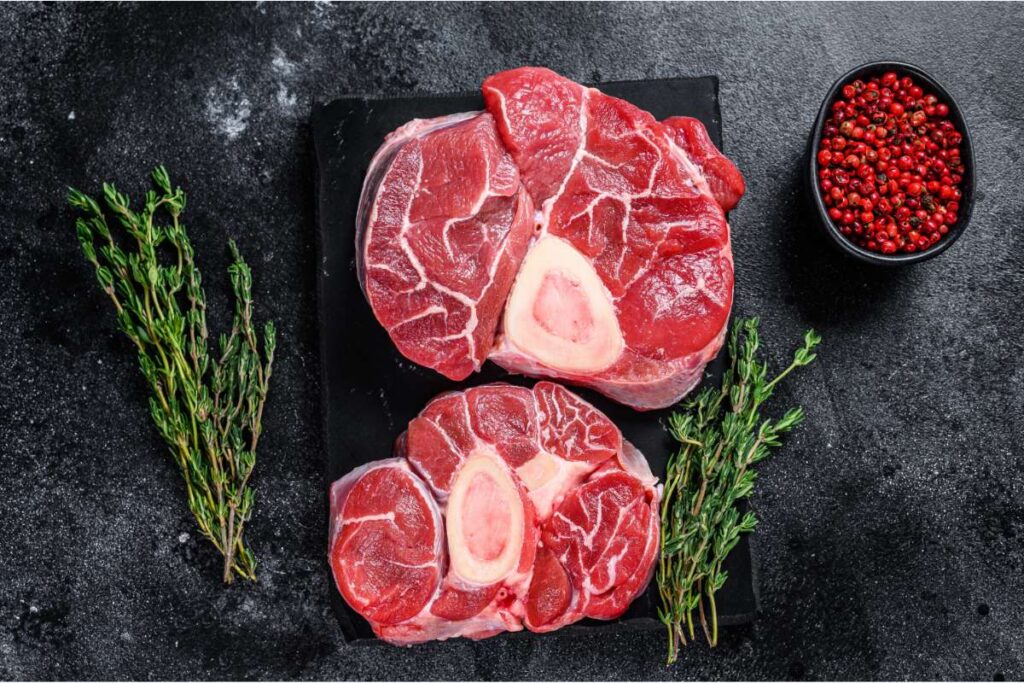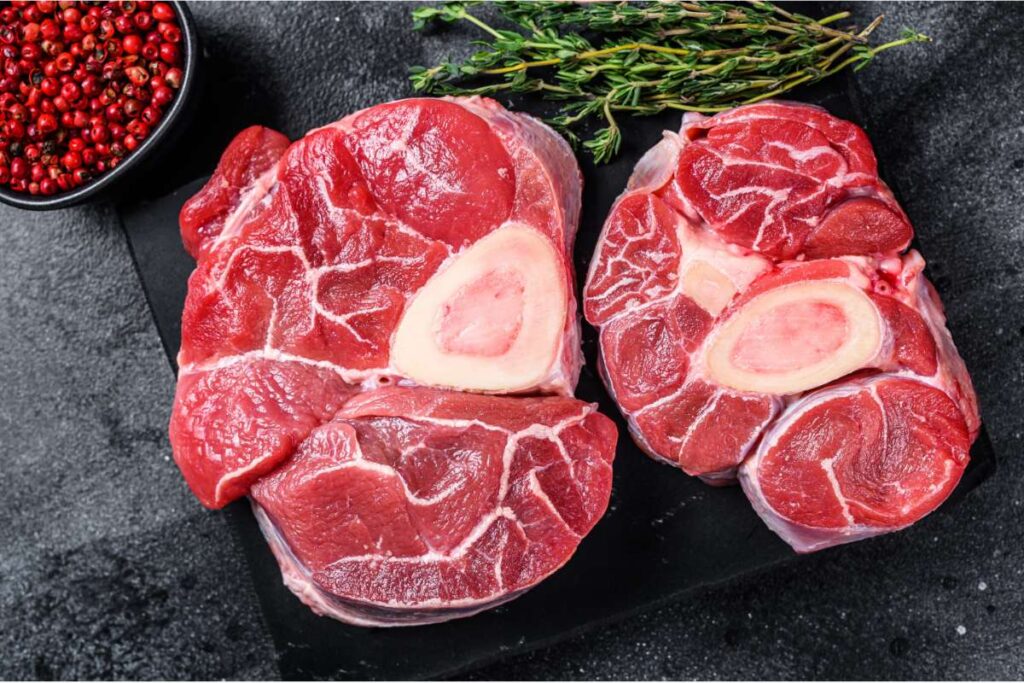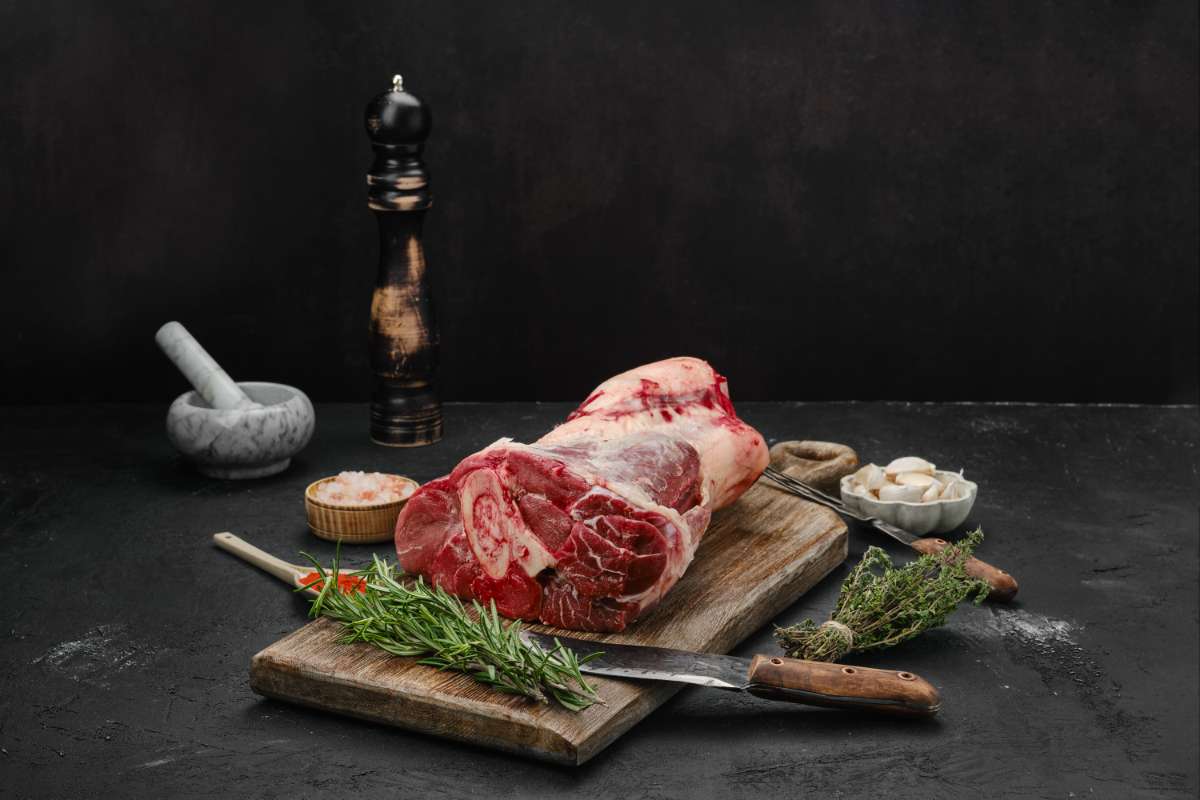In the world of hearty meals that bring warmth to the soul, there’s a hidden gem that often goes unnoticed but packs a flavorful punch capable of transforming your dinner table into a gourmet feast. This treasure? Beef shank. This article takes you on a culinary journey, exploring the depths of beef shank recipes, unveiling the secrets behind preparing this tough yet rewarding cut of meat, and diving into a world of rich flavors and tender textures that only slow cooking can unveil. From understanding what beef shank is to mastering the art of cooking it to perfection, we’ll cover it all. Prepare to elevate your cooking game as we delve into the delicious world of beef shank.
Introduction to Beef Shank
What is Beef Shank?
Beef shank is the leg part of a steer or heifer. Due to its location on the animal, it’s one of the most worked muscles, resulting in a piece of meat that’s packed with flavor but also, notoriously tough. However, when given the right time and care, beef shank transforms into an exquisitely tender delight, bursting with a depth of flavor unmatched by more common cuts.
Why Choose Beef Shank for Your Recipe?
Choosing beef shank for your recipe isn’t just a culinary choice; it’s a journey into the heart of comfort food. This cut, often overlooked for quicker-cooking options, deserves a spot in your cooking repertoire for several compelling reasons:
- Flavor-packed: Thanks to its rich marbling and bone-in cooking, beef shank lends a complex, hearty flavor to any dish it graces.
- Nutritional powerhouse: Packed with proteins, vitamins, and minerals, it’s a wholesome choice that nourishes as much as it satisfies.
- Economical and sustainable: Often more affordable than prime cuts, opting for beef shank is not only wallet-friendly but also a step towards sustainable eating practices, ensuring less wastage of animal parts.
Preparing Beef Shank
Preparing beef shank might seem like a daunting task given its tough reputation, but with the right approach, you’ll unlock a world of deeply satisfying flavors and textures. Let’s break down the steps to get your beef shank ready for the spotlight.
Ingredients Needed
Before diving into the preparation, ensure you have all the necessary ingredients on hand. For a basic yet flavorful beef shank, you’ll need:
- Beef shanks, preferably with the bone in for added flavor
- Salt and freshly ground black pepper for seasoning
- Olive oil for searing
- A mirepoix of diced onions, carrots, and celery to lay the flavor foundation
- Garlic, minced, for an aromatic punch
- Beef broth or water to provide the cooking liquid
- Herbs such as thyme and bay leaves to infuse the dish with depth
Preparing the Meat
- Season Generously: Start by patting the beef shanks dry with paper towels. Season all sides generously with salt and pepper, letting the flavors seep into the meat.
- Sear to Perfection: Heat a heavy-bottomed pan or Dutch oven with a bit of olive oil over medium-high heat. Sear the shanks on all sides until they’re beautifully browned. This step is crucial for developing those deep, caramelized flavors.
- Sauté the Mirepoix: Remove the shanks and set aside. In the same pan, add a bit more oil if needed, and sauté your mirepoix. Once the vegetables start to soften and become fragrant, add the garlic, stirring until just golden.
- Deglaze: Pour in a splash of beef broth or water, scraping up any browned bits from the bottom of the pan. These bits are flavor gold mines, adding richness to your dish.
- Slow Cook: Return the shanks to the pan, add the remaining broth or water until the meat is nearly covered, and toss in your herbs. Bring to a simmer, then cover and transfer to a preheated oven or continue simmering on the stove on very low heat.
Tips for Tender Beef Shank
- Low and Slow is the Way to Go: The key to tenderizing this tough cut lies in cooking it at a low temperature for a prolonged period. This gentle process breaks down the tough muscle fibers, transforming the shank into a fork-tender delight.
- Keep it Covered: Ensure the meat is mostly submerged in liquid and covered tightly during cooking. This creates a moist environment, preventing the meat from drying out.
- Patience Pays Off: Resist the urge to rush the process. The longer and slower you cook, the more tender and flavorful the beef shank will become.

Beef Shank Recipes
Now that we’ve prepared our beef shank and laid the groundwork with essential tips, it’s time to dive into some mouthwatering recipes. Each of these dishes showcases the versatility and depth of flavor that beef shank can bring to your table.
Recipe 1 – Slow-Cooked Beef Shank
This classic recipe is all about simplicity and letting the natural flavors of the beef shank shine through.
- Ingredients: In addition to the prepared beef shank, gather root vegetables like potatoes, carrots, and turnips for a hearty mix.
- Cook: Place the seared beef shank and sautéed mirepoix in a slow cooker. Add the root vegetables and cover with beef broth. Cook on low for 8-10 hours or until the meat is tender and falls off the bone.
- Serve: Adjust the seasoning with salt and pepper to taste. Serve hot, garnished with fresh parsley for a pop of color and freshness.
Recipe 2 – Beef Shank Stew
A comforting stew that’s perfect for cold nights, filled with nutritious vegetables and enriched with the full-bodied taste of beef shank.
- Prepare: Follow the initial preparation steps, cutting the beef shank into smaller pieces if desired.
- Thicken: After returning the seared shanks to the pot with the vegetables, add a can of diced tomatoes and a spoonful of tomato paste for richness. Sprinkle a bit of flour over the mixture before adding the broth to help thicken the stew.
- Simmer: Let the stew simmer on low heat for several hours, stirring occasionally, until the beef is tender and the vegetables are cooked through.
- Finish: Taste and adjust the seasoning as needed. Serve the stew with a side of crusty bread for dipping.
Recipe 3 – Braised Beef Shank
Braising is a fantastic way to cook beef shank, resulting in a dish that’s elegant enough for special occasions yet simple enough for a weeknight dinner.
- Marinate: Enhance the flavor by marinating the beef shanks overnight in a mixture of red wine (or a non-alcoholic substitute like grape juice mixed with a tablespoon of vinegar), garlic, and herbs.
- Braise: After searing, place the beef shank in a deep baking dish with the marinade and enough beef broth to cover. Add in some whole shallots and mushrooms for extra umami.
- Oven: Cover the dish with foil and braise in a preheated oven at 325°F (163°C) for about 3-4 hours, or until the meat is tender.
- Serve: Remove the beef shank and strain the liquid into a saucepan. Reduce over high heat until thickened into a sauce. Season to taste and serve over the shank.
Pairing with Sides
Complement your beef shank dishes with sides that can absorb the rich sauces and balance the hearty flavors. Creamy mashed potatoes, polenta, or a simple side salad are excellent choices that make for a well-rounded meal.
Health and Nutrition
When it comes to choosing ingredients that are as nourishing as they are delicious, beef shank stands out for its impressive nutritional profile. It’s not just about indulging in a hearty meal; it’s also about fueling your body with the essential nutrients it needs.
Nutritional Value of Beef Shank
Beef shank is rich in high-quality protein, essential for building and repairing tissues, and supporting a healthy immune system. It’s also an excellent source of:
- Iron: Crucial for transporting oxygen in the blood, preventing anemia.
- Zinc: Aids in immune function and wound healing.
- Vitamins: Particularly B vitamins, which are vital for energy production and brain health.
Incorporating beef shank recipes into your diet means you’re not just serving up a delicious meal; you’re also providing a wealth of nutrients that support overall health and well-being.
Dietary Considerations
While beef shank is nutritious, it’s also important to consume it as part of a balanced diet. It contains saturated fats, so moderation is key. Pairing it with a variety of vegetables and whole grains can help create a well-rounded and heart-healthy meal. For those interested in the detailed nutritional information of beef shank, the USDA Nutrient Database is an invaluable resource.

Frequently Asked Questions
- How long does it take to cook a beef shank to tender perfection? The magic of beef shank lies in the slow cooking process. Typically, it takes about 2-3 hours of braising on a low heat setting to achieve that fall-off-the-bone tenderness. In a slow cooker, it might take anywhere from 8 to 10 hours on low.
- Can I cook beef shank in a slow cooker? Absolutely! A slow cooker is ideal for cooking beef shank, as the low and slow method allows the tough fibers to break down gradually, resulting in exceptionally tender meat.
- What are the best seasonings for beef shank? Beef shank pairs well with robust seasonings and herbs. Think garlic, rosemary, thyme, and bay leaves. Don’t forget the salt and pepper – they’re essential for bringing out the meat’s natural flavors.
Conclusion
Exploring the culinary potential of beef shank opens up a world of hearty, nourishing meals. These meals promise not just to satisfy your hunger. They transport you to a place of warm, comforting flavors. Beef shank boasts rich nutritional benefits and versatility in recipes. It is a testament to the beauty of slow cooking and the deep, complex flavors that come with it. Whether you’re simmering a stew, braising in a savory sauce, or simply seeking to expand your cooking repertoire; beef shank offers a delightful journey. It leads into the heart of comfort food.
As you venture into the world of beef shank recipes, remember that the key to unlocking its full potential lies in patience and care. Slow cooking allows the tough fibers to become tender, transforming this humble cut into a dish that’s truly extraordinary. For more culinary inspiration and guidance on preparing safe, wholesome meals, FoodSafety.gov offers safe meat preparation guidelines that are invaluable to any home cook.

